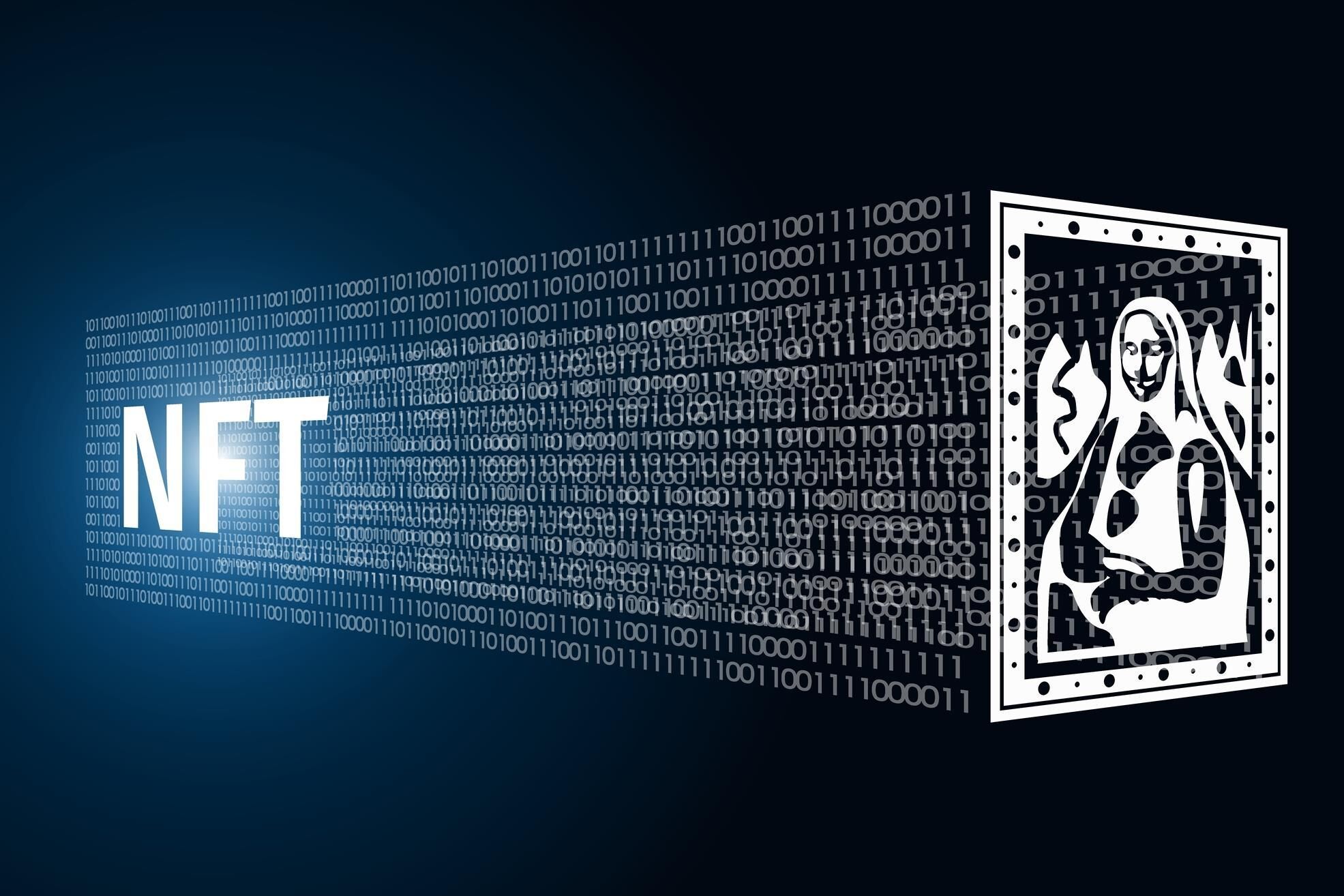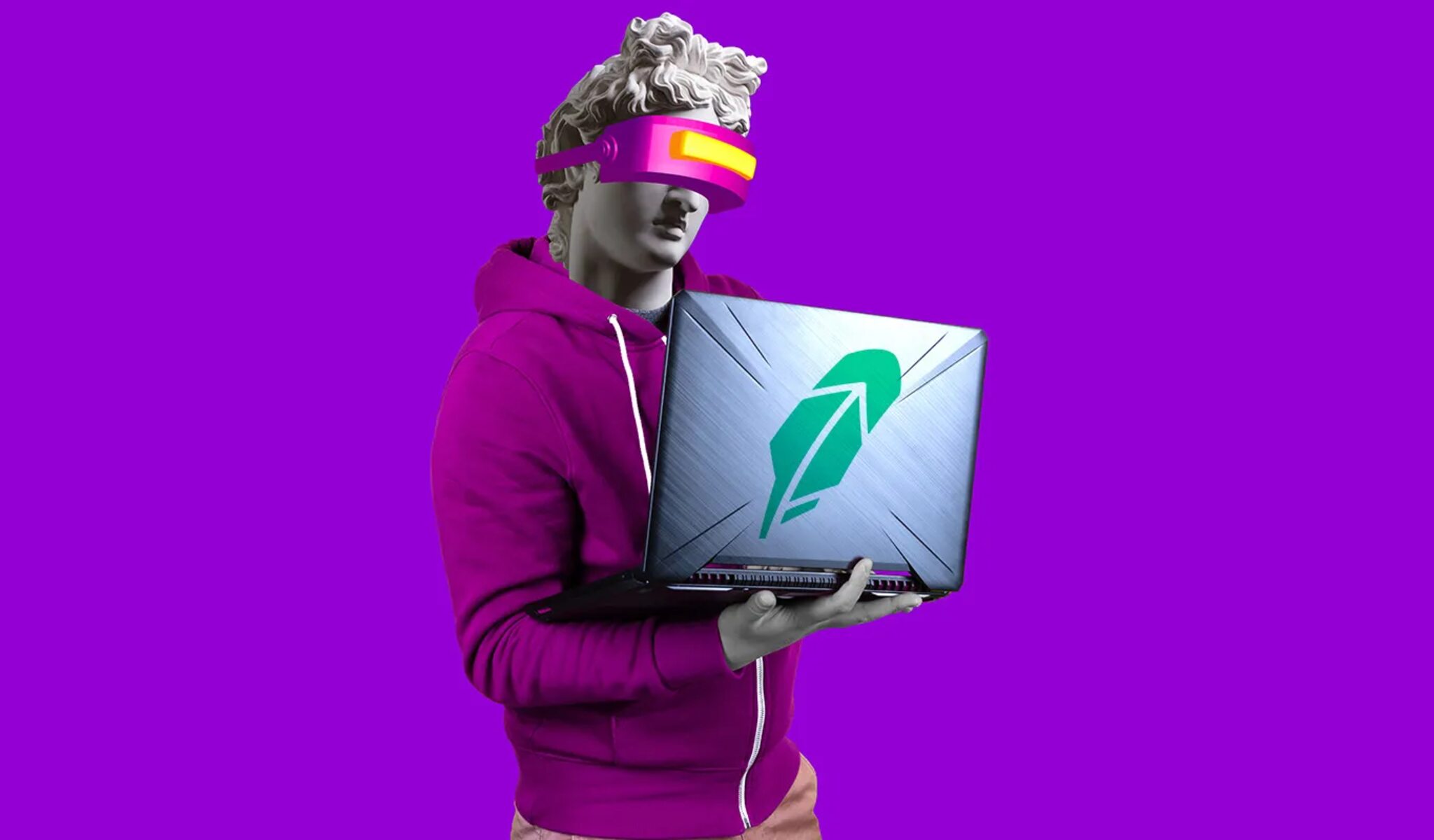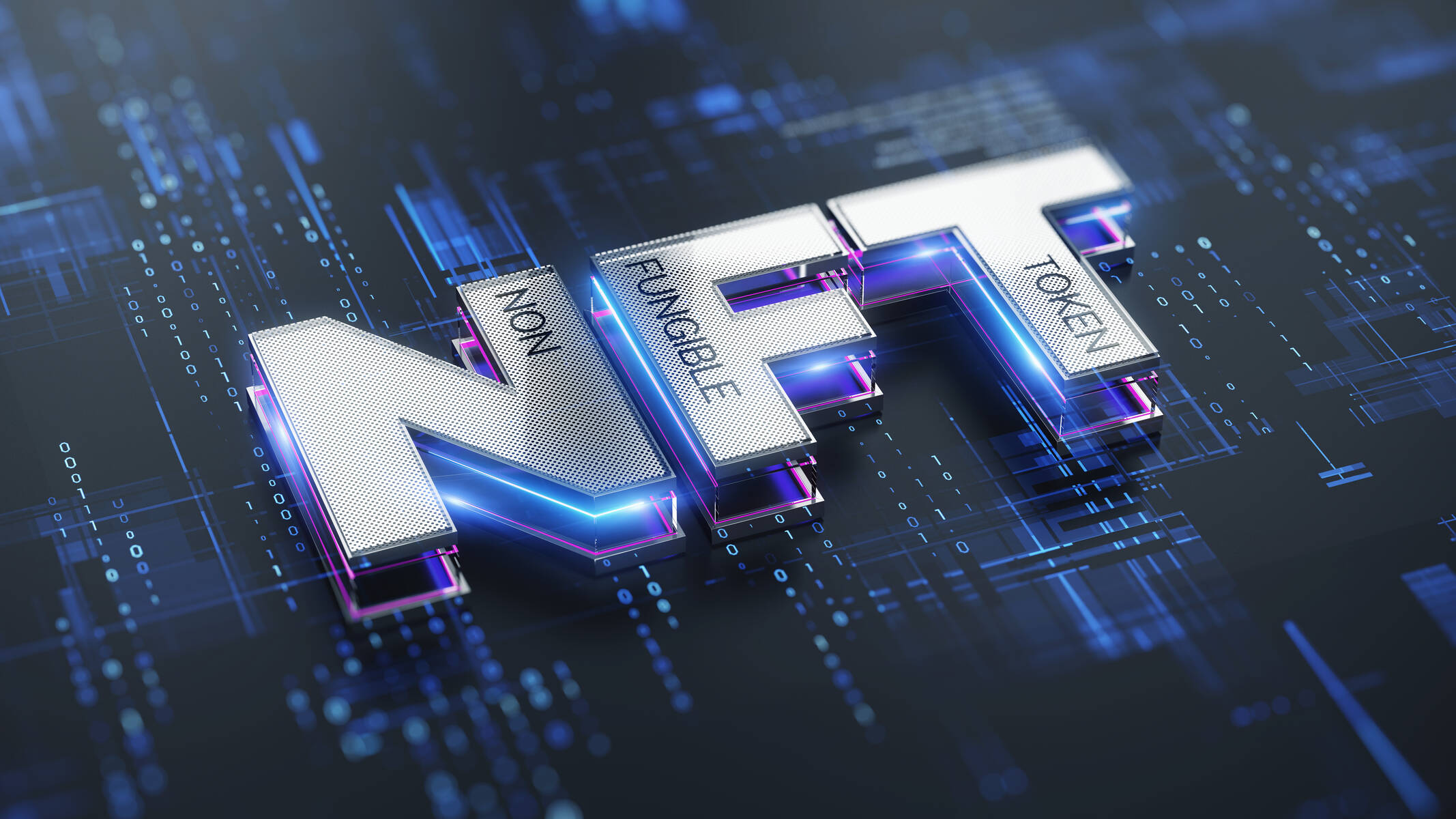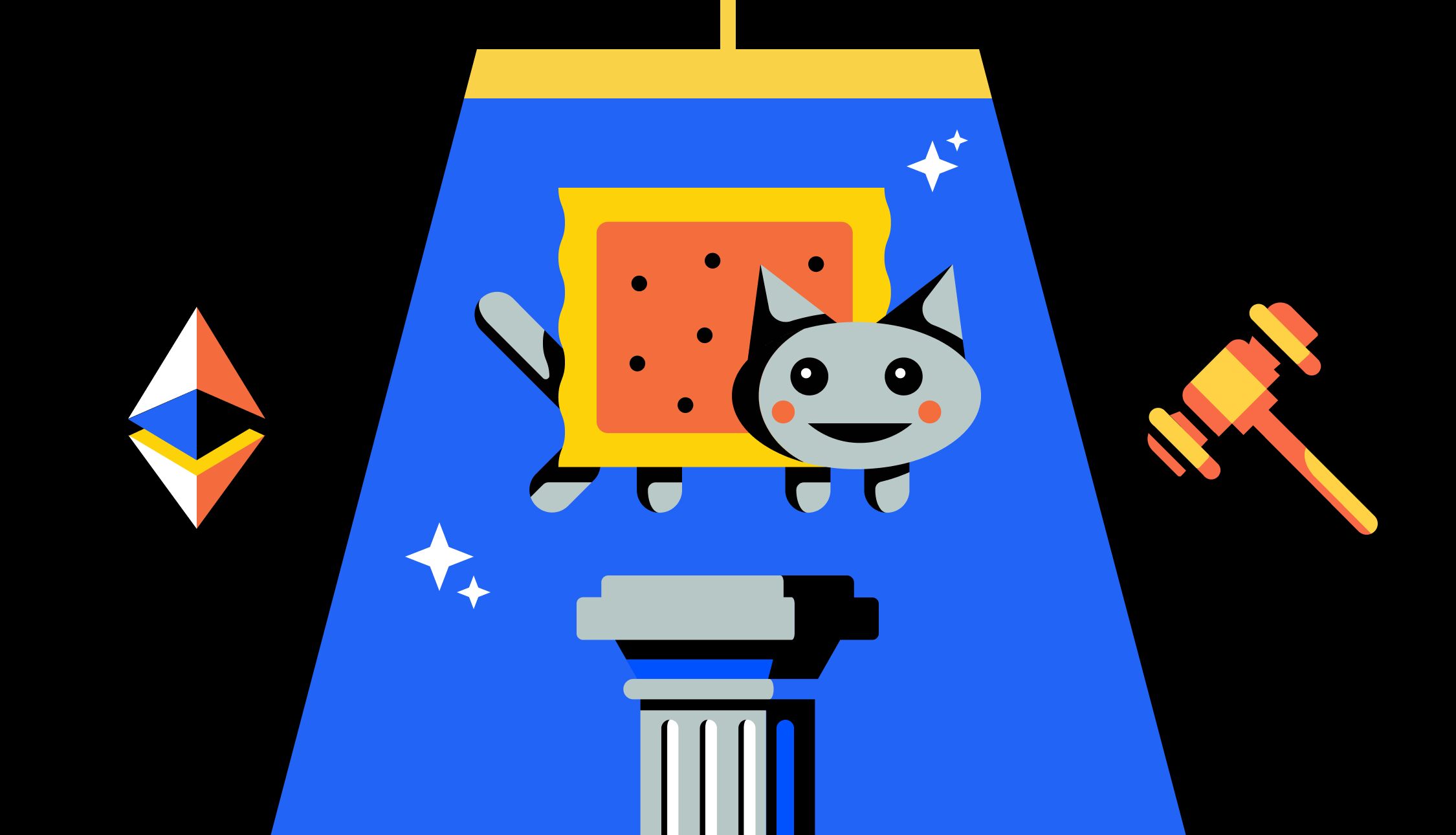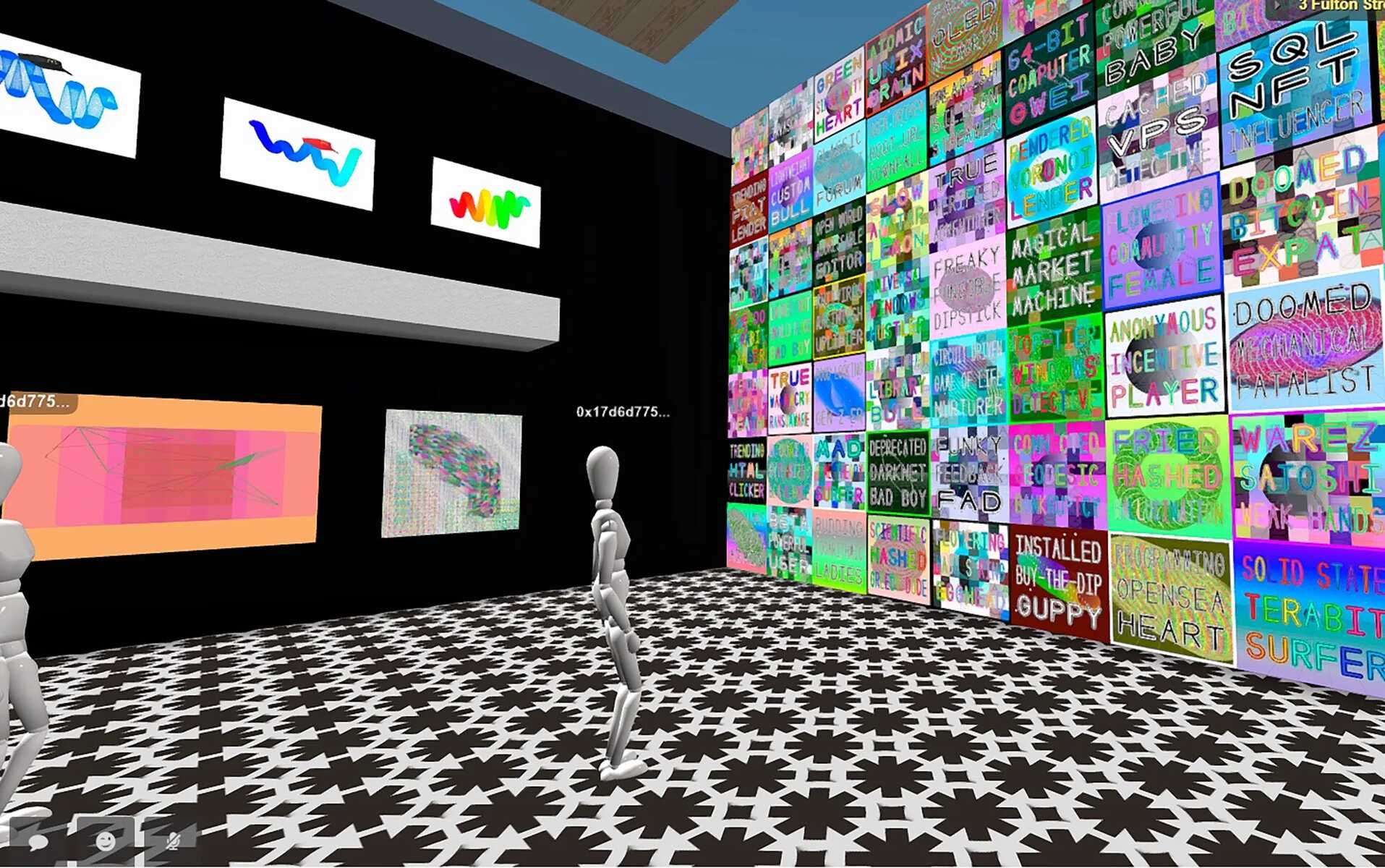Introduction
Welcome to the exciting world of Non-Fungible Tokens (NFTs)! Over the past few years, NFTs have gained enormous popularity and have become a prominent part of the digital art and collectibles market. Whether you are an artist, collector, or investor, understanding the NFT market and how to get involved can lead to exciting opportunities and potential financial gain.
So, what exactly are NFTs? NFTs are unique digital assets that use blockchain technology to establish ownership and provenance. Unlike cryptocurrencies such as Bitcoin or Ethereum, which are fungible and interchangeable, NFTs are indivisible and have distinct characteristics. Each NFT represents a specific item, whether it’s a piece of art, a music track, a video clip, or even virtual real estate.
Investing in NFTs offers several advantages. Firstly, it allows for the ownership and appreciation of digital assets that can potentially increase in value over time. Secondly, investing in NFTs provides an opportunity to support and engage with artists directly, creating a unique connection that traditional art or collectibles may not offer. Additionally, participating in the NFT market allows investors to diversify their portfolios and tap into a rapidly evolving industry with significant investment potential.
Understanding the NFT market is crucial for anyone looking to get involved. It’s important to research various NFT platforms, understand their underlying technology, and familiarize yourself with the terms and concepts frequently used in the NFT space. By doing so, you can navigate the market more effectively and make informed decisions.
In the following sections, we will delve deeper into different aspects of the NFT market, including researching popular NFT platforms, creating your own NFTs, buying and selling NFTs, NFT trading strategies, as well as the risks and considerations associated with this emerging market.
So, whether you’re an artist wanting to showcase your work, a collector looking to add unique pieces to your collection, or an investor seeking new opportunities, this guide will provide you with the knowledge and tools to navigate the exciting world of NFTs and open doors to a whole new realm of digital ownership and creativity.
What are NFTs?
Non-Fungible Tokens, commonly referred to as NFTs, have revolutionized the digital asset space. Unlike cryptocurrencies such as Bitcoin or Ethereum, which are interchangeable and hold the same value, NFTs represent unique and indivisible items. Each NFT acts as a digital certificate of ownership, authenticated through blockchain technology.
The uniqueness of NFTs is what makes them so valuable. They can represent various digital assets, including artwork, music, videos, virtual real estate, and even virtual pets. NFTs ensure that these digital creations are one-of-a-kind by utilizing cryptographic technology to create a permanent and immutable record of ownership.
One of the key components that sets NFTs apart is their ability to establish provenance and ownership. The blockchain acts as a decentralized ledger that records the entire history of an NFT, including the initial creation, subsequent transfers, and any changes made to the ownership. This transparency gives artists and creators greater control over their work, as well as providing buyers with a clear and traceable ownership history.
One important aspect to understand about NFTs is that they derive their value from the perceived worth of the digital asset they represent. The value of an NFT can fluctuate based on factors such as the reputation of the artist, the scarcity of the item, the demand from collectors, and the overall popularity of the NFT market.
Additionally, NFTs offer a range of benefits to artists and creators. They provide an opportunity for artists to monetize their digital creations directly without relying on intermediaries. This allows for greater creative freedom and the potential to generate significant income from their work. NFTs also enable artists to establish a direct connection with their audience and offer unique experiences or bonus content to NFT owners.
Collectors and investors are drawn to NFTs for various reasons as well. Owning an NFT represents a sense of exclusivity and prestige, as it signifies ownership of a one-of-a-kind digital asset. Collectors can curate their own unique collections, showcasing their individual taste and interests. Additionally, investors see the potential for NFTs to appreciate in value over time, providing opportunities for capital gain.
In summary, NFTs are unique digital assets that use blockchain technology to establish ownership and provenance. They represent a wide range of digital creations and offer a new way for artists, collectors, and investors to engage with the digital art and collectibles market.
Why Invest in NFTs?
Investing in NFTs has gained immense popularity in recent years, attracting artists, collectors, and investors alike. But what makes NFTs such an enticing investment opportunity? Let’s explore some of the key reasons why people choose to invest in NFTs.
Firstly, NFTs offer the potential for substantial financial gains. In the past, many early adopters and creators of NFTs have seen their digital assets appreciate significantly in value. Rare and highly sought-after NFTs have sold for millions of dollars, providing a lucrative opportunity for those who got in early. This potential for substantial returns has caught the attention of investors seeking diversification and high-growth assets.
Secondly, NFTs enable investors to participate directly in the success of artists and creators. When you purchase an NFT, you are supporting the artist and their work directly. This direct connection creates a unique bond and allows investors to participate in the growth and success of the artist’s career. As the artist gains recognition and their work becomes more valuable, the NFTs associated with their creations can also increase in value.
Another reason to consider investing in NFTs is the potential for cultural impact. NFTs have opened up new possibilities for artists to monetize their work and reach a global audience. The ability to own and trade digital collectibles has revolutionized the art world, offering a digital-first approach that resonates with tech-savvy audiences. By investing in NFTs, you can contribute to this cultural shift and have a stake in the future of digital ownership.
Furthermore, NFTs provide a level of authenticity and scarcity that traditional digital assets often lack. The blockchain technology underlying NFTs ensures that each asset is unique and definitively traceable. This scarcity enhances the value of the NFTs, making them desirable to collectors who seek exclusive and limited-edition items.
Lastly, investing in NFTs opens up opportunities for portfolio diversification. Traditional investment instruments such as stocks, bonds, and real estate can be complemented by adding NFTs to your investment mix. By diversifying your portfolio, you can potentially reduce risk and increase the chances of achieving higher returns.
However, it’s important to note that investing in NFTs comes with its own set of risks and considerations. The market can be volatile, and the value of NFTs can fluctuate dramatically. It’s crucial to conduct thorough research, stay informed about market trends, and exercise caution when making investment decisions in the NFT space.
In summary, investing in NFTs offers the potential for financial gains, direct support of artists and creators, involvement in cultural shifts, and portfolio diversification. With careful consideration and research, investing in NFTs can be a rewarding and exciting venture.
Understanding the NFT Market
The NFT market is a dynamic and rapidly evolving space that requires a comprehensive understanding to navigate successfully. To engage effectively in the market, it’s essential to grasp the key components and factors that drive the value and trends within the NFT ecosystem.
The first aspect to understand is the role of NFT platforms. These platforms serve as marketplaces where creators can mint and list their NFTs for sale. Examples of popular NFT platforms include OpenSea, Rarible, and SuperRare. Each platform has its own unique features, user base, and listing fees. It’s crucial to research and understand these platforms to determine which aligns best with your goals and target audience.
Another critical factor to consider is the concept of rarity in the NFT market. Rarity is a crucial component that influences the value of NFTs. Highly limited or one-of-a-kind NFTs tend to fetch higher prices due to their exclusivity and desirability. Rarity can be influenced by factors such as scarcity, unique attributes, or the reputation of the creator.
Additionally, the community and social aspect of the NFT market plays a significant role in shaping trends and values. Engaging with the NFT community, attending virtual events, and staying active on social media platforms can provide valuable insights into emerging artists, popular collections, and upcoming trends. Building connections within the community can lead to new opportunities and collaborations.
Understanding the underlying technology of NFTs is vital as well. NFTs are built on blockchain networks, typically utilizing the Ethereum blockchain. It’s essential to have a basic understanding of blockchain technology, smart contracts, and wallet management to ensure the secure storage and transfer of NFTs.
Market trends and demand for specific types of NFTs can fluctuate significantly. Staying up to date with the latest news, trends, and influencers in the NFT space can help identify investment opportunities or areas of potential growth. Additionally, monitoring transaction volumes and price movements can provide insights into the overall health and activity of the market.
Lastly, it’s important to approach the NFT market with a long-term perspective. The market experiences periods of ups and downs, and not all investments will yield immediate returns. Patience, research, and a well-thought-out strategy can often lead to more successful outcomes in the long run.
In summary, understanding the NFT market involves familiarizing yourself with NFT platforms, grasping the concept of rarity, engaging with the community, comprehending the underlying technology, and staying informed about market trends. With a thorough understanding of the NFT market, investors can make more informed decisions and maximize their opportunities in this exciting and evolving sector.
Researching Popular NFT Platforms
When diving into the world of NFTs, it’s crucial to research and understand the various NFT platforms available. These platforms serve as marketplaces where creators can mint and list their NFTs for sale, and buyers can browse, purchase, and trade NFTs. To effectively navigate the NFT market, it’s important to explore and evaluate the features, benefits, and user experience provided by popular NFT platforms.
One of the most widely recognized NFT platforms is OpenSea. It is one of the largest and most diverse marketplaces for NFTs, offering a wide range of digital assets, including artwork, collectibles, virtual real estate, and more. OpenSea provides a user-friendly interface and offers features such as bidding, auctions, and the ability to create decentralized storefronts. Additionally, OpenSea supports various blockchain networks, allowing for flexibility in the types of NFTs available.
Rarible is another prominent NFT platform that offers a decentralized marketplace for digital creators. Rarible allows artists and creators to mint and sell their NFTs, providing a platform for independent artists to showcase their work. The platform features a unique governance model where users can participate in decision-making processes, giving them a stake in the platform’s future direction.
SuperRare is a curated platform that focuses on digital artwork, specifically limited-edition and unique pieces. SuperRare ensures that the artwork listed on their platform goes through a strict curation process, maintaining a high level of quality and exclusivity. As a result, SuperRare has gained a reputation for supporting renowned digital artists and attracting collectors and investors who value premium digital artwork.
Besides these major platforms, there are several others worth exploring. Foundation is a curated platform that emphasizes creativity and unique storytelling, allowing creators to showcase their work through auctions and collections. NBA Top Shot has gained significant attention for its digital collectibles featuring iconic basketball moments, appealing to sports enthusiasts and collectors alike. Other platforms like Mintable, NBA Top Shot, and Binance NFT Marketplace offer additional options and features to consider.
As you research NFT platforms, there are a few key factors to consider. This includes the platform’s reputation, user base, fees, ease of use, and the types of NFTs available. Determine whether the platform aligns with your goals as a creator, collector, or investor. It’s also important to consider the platform’s security measures and the support it provides in terms of customer service and dispute resolution.
Exploring popular NFT platforms will not only provide you with an understanding of the market landscape but also open up opportunities to discover unique artists, collections, and investment prospects. By staying informed about the various platforms and their offerings, you can make more informed decisions and maximize your engagement in the NFT market.
Creating Your Own NFT
One of the exciting aspects of the NFT market is the ability for artists and creators to mint and sell their own unique digital assets. Creating your own NFT is a process that involves several steps, from conceptualizing the artwork or digital item to listing it on a marketplace for sale. Let’s explore the process of creating and minting your own NFT.
The first step in creating your own NFT is to decide on the digital asset you want to mint. It could be a piece of digital artwork, a music track, a video clip, or even a virtual item. Ensure that the digital asset meets the guidelines and requirements of the chosen NFT platform. The content should be original and not infringing on any copyrights or intellectual property.
Once you have your digital asset ready, you’ll need to choose the appropriate NFT platform to mint and list your NFT. Popular platforms such as OpenSea, Rarible, or Mintable offer easy-to-use interfaces for uploading and minting your NFT. Each platform may have different requirements and fees, so it’s important to research and understand the specific guidelines of your chosen platform.
When minting your NFT, you’ll usually need to provide information such as a title, description, and possibly a set of metadata that describes your NFT. Metadata includes details such as the artist’s name, a description of the artwork, and any unique attributes or properties associated with the NFT. This information helps potential buyers understand and appreciate the value of your NFT.
Additionally, you’ll be required to upload the digital file or provide a link to the file associated with your NFT. This ensures that the digital asset is verified and stored on the blockchain, establishing its uniqueness and ownership. The blockchain technology used by NFTs ensures that the digital asset cannot be replicated or tampered with, providing secure ownership and authenticity.
After minting your NFT, you’ll have the option to set a price for the NFT or list it for auction. Consider factors such as the scarcity of your digital asset, the demand for your artwork, or any additional perks or bonuses you want to offer to potential buyers.
It’s important to promote your NFT to increase its visibility and reach potential buyers. Utilize social media, online communities, and platforms dedicated to NFT enthusiasts to showcase your artwork and engage with potential collectors. Building a supportive network and connecting with fellow artists and collectors can also help increase exposure for your NFT.
Lastly, regularly monitor and manage your NFT listings. Respond promptly to inquiries and interactions from potential buyers, and be proactive in marketing your NFT through various channels. Additionally, consider participating in NFT events, collaborations, or partnerships to further enhance your visibility and reach.
Creating your own NFT allows you to showcase your artistic talents, connect with a global audience, and potentially generate income from your digital creations. By following the necessary steps and leveraging the tools and platforms available, you can bring your unique vision to life and contribute to the exciting world of NFTs.
Buying NFTs
Buying NFTs is an exciting way to participate in the digital art and collectibles market. Whether you’re an art enthusiast or an investor looking for new opportunities, purchasing NFTs allows you to own unique pieces of digital artwork, music, videos, or virtual items. Here are some essential steps and considerations when buying NFTs.
The first step is to research and explore the various NFT platforms available. Popular platforms like OpenSea, Rarible, and SuperRare offer a wide selection of NFTs from different artists and creators. Each platform has its own user interface, features, and community. Take the time to familiarize yourself with the platforms to find the right one that suits your preferences and interests.
Once you’ve chosen a platform, it’s essential to understand the specific NFT you’re interested in. Look into the artist or creator behind the NFT, their style, reputation, and previous works. This information can help you gauge the quality and value of the artwork or digital item you’re considering purchasing.
Consider the rarity and scarcity of the NFT. Highly limited or one-of-a-kind NFTs tend to be more sought after and can command higher prices. Pay attention to attributes like edition numbers or any unique features associated with the NFT, as these can add value and exclusivity.
Set a budget for your NFT purchase. NFT prices can range from a few dollars to millions, so it’s important to determine how much you’re willing to invest. Establishing a budget will help guide your decision-making process and prevent overspending.
Completing the actual purchase of an NFT usually requires a cryptocurrency wallet. Most NFT platforms accept Ethereum (ETH) as the primary currency for transactions. Ensure you have a funded cryptocurrency wallet that supports the necessary tokens for the platform you’re using.
When making a purchase, carefully review the details and terms of the NFT listing. Look for any additional perks or bonuses offered by the artist, such as access to exclusive content or future updates. Pay attention to any royalties or revenue-sharing arrangements that may apply to the NFT, as some platforms provide ongoing benefits to the original creator.
After purchasing an NFT, transfer it to your own digital wallet for safekeeping. This ensures that you have full control over your digital asset and can access it whenever you want. Understand the process of transferring ownership and storing NFTs securely, as losing access to your digital wallet could lead to loss of ownership.
Lastly, remember that the value of NFTs can be volatile. Prices can fluctuate significantly, sometimes within a short period. It’s important to conduct thorough research, stay informed about market trends and dynamics, and exercise caution when making purchasing decisions.
Buying NFTs provides an excellent opportunity to own unique and valuable digital assets while supporting artists and creators directly. By following these steps and staying informed, you can make informed choices and build a collection that aligns with your own personal interests and investment goals.
Selling NFTs
Selling NFTs is an exciting process that enables artists, creators, and collectors to monetize their digital assets and share them with a global audience. Whether you’re looking to profit from your own creations or sell NFTs you’ve acquired, it’s important to understand the steps involved in selling NFTs.
The first step in selling an NFT is to choose a suitable marketplace. There are numerous NFT platforms available, such as OpenSea, Rarible, and SuperRare, where you can list your NFT for sale. Consider factors such as the platform’s user base, fees, and the types of NFTs sold on the platform to find the best fit for your artwork or digital item.
When preparing to sell your NFT, it’s crucial to ensure that your digital asset meets the platform’s guidelines and requirements. Familiarize yourself with any specifications regarding file formats, size limits, and acceptable content. Providing high-quality images or previews of your NFT can greatly enhance its appeal to potential buyers.
Set a price for your NFT. Consider factors such as the demand for your artwork, the scarcity or uniqueness of the NFT, the reputation of the artist or creator, and the overall market trends. You can choose to list your NFT at a fixed price or opt for an auction-style listing where interested buyers can bid on your NFT.
When determining the price for your NFT, it’s important to factor in any fees associated with the platform. NFT platforms typically charge listing fees and transaction fees, which can vary depending on the platform and the specific details of your listing. Take these fees into account to ensure you’re setting an appropriate price that aligns with your desired profit margins.
Promote your NFT to increase its visibility and attract potential buyers. Leverage social media platforms, online communities, and engagement with fellow artists and collectors. Building a strong network and showcasing your NFT through various channels can help generate interest and drive sales.
Engaging with the NFT community is vital when selling your NFT. Participate in discussions, attend virtual events, and collaborate with other artists and collectors. The connections you make can lead to increased exposure and potential collaborations that enhance the value and visibility of your NFT.
Regularly monitor and manage your NFT listing. Respond promptly to inquiries and messages from potential buyers, and provide additional information or clarification as needed. Be proactive in marketing your NFT, and consider adjusting the price or exploring new promotional strategies if necessary.
Once your NFT is sold, it’s important to ensure a smooth and secure transfer of ownership. Follow the required steps and processes outlined by the platform to transfer the NFT to the buyer’s wallet. Confirm the completion of the transaction on the blockchain to provide both parties with a clear record of ownership.
By following these steps and actively engaging with the NFT community, you can increase the chances of successfully selling your NFT and connecting with interested buyers. Selling NFTs not only provides a way to monetize your digital assets but also allows you to establish connections, gain exposure, and contribute to the growing NFT market.
NFT Trading Strategies
Engaging in NFT trading requires careful consideration and the development of effective strategies to maximize potential returns. While the NFT market can be volatile, implementing sound trading strategies can help mitigate risks and increase the chances of profitable trades. Here are some key strategies to consider when trading NFTs.
1. Research and Analysis: Thorough research is crucial for successful NFT trading. Stay up to date with market trends, track the performance of different NFT categories, and analyze the historical sales data of specific artists or collections. By conducting comprehensive research and analysis, you can make more informed trading decisions and capitalize on emerging opportunities.
2. Diversify Your Portfolio: Diversification is a fundamental strategy in investing, and it applies to NFT trading as well. Spread your investments across various types of NFTs, artists, and platforms. This reduces the risk associated with individual assets and allows you to tap into different market segments, increasing your chances of benefiting from potential growth areas.
3. Identify Potential Trends: Explore emerging trends in the NFT market and identify areas with high growth potential. By recognizing early-stage trends or movements within particular genres or themes, you can acquire NFTs at lower prices before they gain wider attention and appreciation. Staying ahead of the curve can lead to profitable trades and investment opportunities.
4. Follow Influencers and Market Sentiment: Pay attention to influencers, collectors, and prominent figures within the NFT community. Influencers can drive demand for specific NFTs by showcasing and endorsing certain artists or collections. Monitoring market sentiment can provide insights into the market’s perception of particular NFT projects and can influence trading decisions.
5. Set Clear Entry and Exit Points: Define your entry and exit points before entering a trade. Establish a target price at which you’re comfortable buying an NFT and a target price at which you plan to sell or take profits. This helps you avoid emotional decision-making and ensures that your trading strategy is based on predetermined criteria rather than speculation.
6. Be Mindful of Fees: Consider the fees associated with NFT trading. NFT platforms often charge listing fees, transaction fees, and gas fees for executing transactions on the blockchain. Take these fees into account when evaluating potential trades and calculate them alongside potential profits or losses.
7. Stay Informed and Adaptive: The NFT market is dynamic and ever-evolving. Stay informed about new developments, technological advancements, and regulatory changes that may impact the NFT space. Adapt and adjust your trading strategies as necessary to respond to market conditions and changing trends.
8. Manage Risk: Risk management is crucial in any trading strategy. Set a predetermined budget for NFT trading, and avoid investing more than you can afford to lose. Consider implementing stop-loss orders or utilizing hedging strategies to protect your investments against potential downturns.
By implementing these strategies and continuously refining your approach, you can improve your chances of success in trading NFTs. However, it’s important to note that trading in the NFT market still carries risks, and no strategy guarantees profit. Diligence, research, and prudent decision-making are essential in navigating this exciting and dynamic market.
Risks and Considerations
While the NFT market offers exciting opportunities, it’s important to be aware of the risks and considerations involved. As with any investment or speculative asset, there are potential pitfalls and challenges that should be carefully evaluated. Here are some important risks and considerations to keep in mind when engaging in NFTs.
1. Market Volatility: The NFT market is known for its volatility, with prices of NFTs fluctuating wildly. The value of an NFT can rise or fall rapidly based on factors such as market sentiment, changing trends, and the perception of the broader crypto market. It’s important to be prepared for potential price swings and to carefully consider the risk associated with market volatility.
2. Lack of Regulation: The NFT market is relatively new and operates with limited regulation compared to traditional financial markets. This lack of oversight can expose investors to potential scams, fraudulent activity, or unscrupulous practices. It’s crucial to thoroughly research platforms, artists, and NFT projects before engaging in any transactions and to exercise caution when dealing with unfamiliar entities.
3. Counterfeit or Stolen NFTs: The nature of the digital medium makes it possible for counterfeit NFTs to be created or for stolen NFTs to be sold. Due diligence is essential in ensuring the authenticity and legitimacy of an NFT before making a purchase. Verifying the creator’s identity, conducting research on the piece’s provenance, and utilizing reputable platforms can help mitigate the risk of acquiring counterfeit or stolen NFTs.
4. Technological Risks: NFTs are built on blockchain technology, which introduces potential technical risks. This includes the risk of smart contract vulnerabilities, network congestion, and potential hacks or security breaches. It’s important to understand the underlying technology and take necessary precautions to secure digital wallets and protect NFT investments from potential technological risks.
5. Illiquid Market: The NFT market can be relatively illiquid compared to more established financial markets. It may be challenging to quickly sell an NFT or find a buyer at the desired price, particularly during periods of low demand or market downturns. Prepare for the possibility of holding onto an NFT for an extended period, and consider the potential impact on liquidity and investment strategies.
6. Environmental Concerns: NFTs have come under scrutiny due to their environmental impact, particularly in relation to energy consumption. Proof-of-Work blockchain networks, such as Ethereum, can require substantial computational power, leading to significant carbon footprints. Consider the environmental implications of participating in NFTs and explore alternative blockchain networks that offer more sustainable solutions.
7. Emotional Decision-making: The excitement and hype surrounding NFTs can lead to emotional decision-making, which may not align with prudent investment strategies. It’s crucial to approach NFT trading with a rational mindset, sticking to predetermined strategies and avoiding impulsive or FOMO-driven decisions.
8. Personal Risk Tolerance: Assess your personal risk tolerance and financial situation before engaging in NFTs. NFT investments should be considered speculative and high-risk assets. Never invest more than you can afford to lose and evaluate the potential impact on your overall investment portfolio.
Considering these risks and considerations and incorporating them into your decision-making process can help you navigate the NFT market with a more informed and cautious approach. Conduct thorough research, stay updated on market trends and developments, and consult with financial professionals if needed to make well-informed decisions in this rapidly evolving space.
Conclusion
The NFT market has transformed the way we perceive and engage with digital assets, offering new possibilities for artists, collectors, and investors. Understanding the intricacies of the NFT market is crucial to navigate this rapidly evolving space successfully.
By delving into the world of NFTs, we have explored what NFTs are and their appeal in the digital art and collectibles market. We have discussed the reasons to invest in NFTs, the challenges and opportunities associated with them, and the importance of conducting thorough research.
We have also examined various aspects of the NFT market, including researching popular platforms, creating and minting your own NFTs, buying and selling NFTs, and implementing effective trading strategies. We highlighted the risks, such as market volatility, lack of regulation, and technological risks, and emphasized the importance of careful consideration and risk management.
As with any investment or speculative asset, it’s crucial to approach NFTs with diligence, research, and a long-term perspective. Building a strong understanding of the market, staying informed about trends and developments, and engaging with the NFT community can help you make informed decisions and navigate the market with confidence.
While the NFT market continues to evolve and face challenges, it presents a unique opportunity to engage with digital art, support artists directly, and potentially realize financial gains. By staying informed, adapting to market dynamics, and being mindful of the risks, you can participate in this exciting digital frontier and unleash the creative and investment potential of NFTs.







